
Florianópolis: The Magic Island of Brazil
Discover Florianópolis: Brazil's enchanting island paradise with pristine beaches, rich culture, and vibrant nightlife.
Florianópolis, affectionately known as 'Floripa,' is a stunning island city in southern Brazil. It boasts over 40 pristine beaches, making it a haven for sun-seekers and water sports enthusiasts. The city's unique blend of urban sophistication and natural beauty offers a perfect escape for those looking to relax and explore. Floripa's beaches cater to all tastes—whether you're looking for a vibrant social scene, quiet solitude, or excellent surfing conditions. Praia Mole and Joaquina Beach are famous for their surf-worthy waves, while Lagoinha do Leste and Campeche offer more secluded spots to unwind. The island's lush hills and trails provide ample opportunities for hiking, offering breathtaking views of the Atlantic Ocean. Beyond its natural allure, Florianópolis is rich in culture and history. The city's colonial architecture can be explored in its historic center, where colorful buildings and cobblestone streets tell tales of the past. The Mercado Público, a lively market, is perfect for sampling local cuisine, including fresh seafood and traditional dishes like 'sequência de camarão' (shrimp sequence). Floripa is also known for its vibrant nightlife and festivals. The city's clubs and bars, particularly in the Lagoa da Conceição area, offer a range of experiences from laid-back lounges to high-energy dance floors. Annual events like the Florianópolis Carnival bring the streets to life with music, dance, and colorful parades. Whether you're an adventurer, a history buff, or a party-goer, Florianópolis has something to offer everyone.
Local tips in Florianópolis
- Visit during the shoulder seasons (spring and fall) for fewer crowds and pleasant weather.
- Use local buses or rent a car to explore different parts of the island.
- Try the local seafood dishes at the Mercado Público for an authentic culinary experience.
- Pack comfortable shoes for hiking trails and exploring the historic center.
- Check out the surf conditions before heading to the beaches if you're into surfing.
Neighbourhoods in Florianópolis
Florianópolis: The Magic Island of Brazil
Florianópolis, affectionately known as 'Floripa,' is a stunning island city in southern Brazil. It boasts over 40 pristine beaches, making it a haven for sun-seekers and water sports enthusiasts. The city's unique blend of urban sophistication and natural beauty offers a perfect escape for those looking to relax and explore. Floripa's beaches cater to all tastes—whether you're looking for a vibrant social scene, quiet solitude, or excellent surfing conditions. Praia Mole and Joaquina Beach are famous for their surf-worthy waves, while Lagoinha do Leste and Campeche offer more secluded spots to unwind. The island's lush hills and trails provide ample opportunities for hiking, offering breathtaking views of the Atlantic Ocean. Beyond its natural allure, Florianópolis is rich in culture and history. The city's colonial architecture can be explored in its historic center, where colorful buildings and cobblestone streets tell tales of the past. The Mercado Público, a lively market, is perfect for sampling local cuisine, including fresh seafood and traditional dishes like 'sequência de camarão' (shrimp sequence). Floripa is also known for its vibrant nightlife and festivals. The city's clubs and bars, particularly in the Lagoa da Conceição area, offer a range of experiences from laid-back lounges to high-energy dance floors. Annual events like the Florianópolis Carnival bring the streets to life with music, dance, and colorful parades. Whether you're an adventurer, a history buff, or a party-goer, Florianópolis has something to offer everyone.
When is the best time to go to Florianópolis?
Iconic landmarks you can’t miss
Ponte Hercílio Luz
Explore the stunning Ponte Hercílio Luz, a historic bridge in Florianópolis offering breathtaking views and a glimpse into the city's architectural heritage.
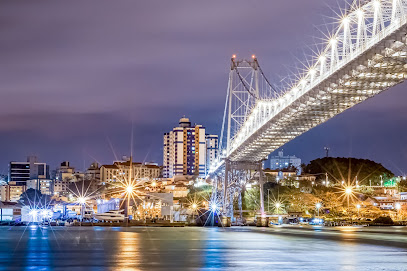
Fundação Projeto TAMAR Florianópolis
Explore marine conservation at Fundação Projeto TAMAR, an inspiring attraction in Florianópolis focused on protecting sea turtles and educating visitors.
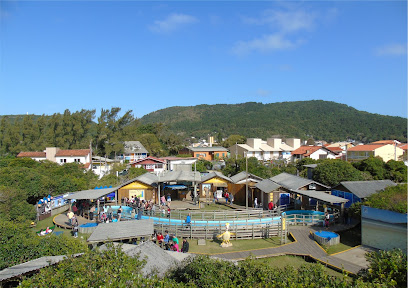
São José da Ponta Grossa Fortress
Discover the rich history and breathtaking views at São José da Ponta Grossa Fortress in Florianópolis, a must-visit for every tourist.
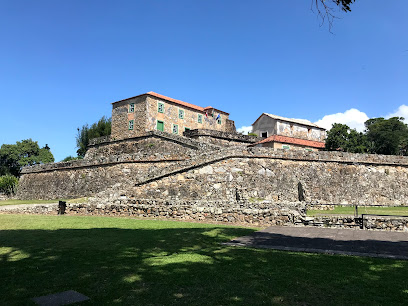
Matadeiro Beach
Experience the beauty and adventure of Matadeiro Beach in Santa Catarina, a tropical paradise perfect for relaxation and exploration.
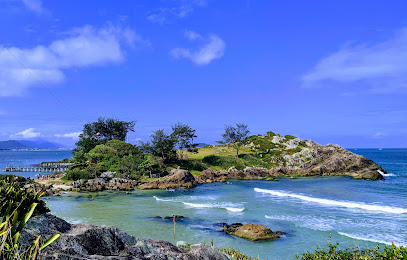
Mirante do Morro da Cruz
Discover the stunning vistas of Florianópolis at Mirante do Morro da Cruz, where breathtaking views and natural beauty come together.
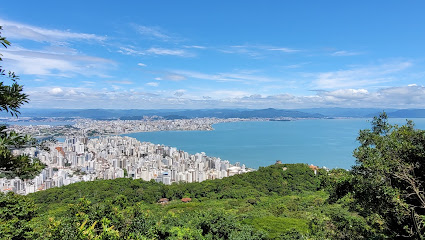
Fortaleza de Santa Cruz de Anhatomirim
Discover the breathtaking Fortaleza de Santa Cruz de Anhatomirim, a historical fortress on Ilha de Anhatomirim, rich in culture and stunning coastal views.
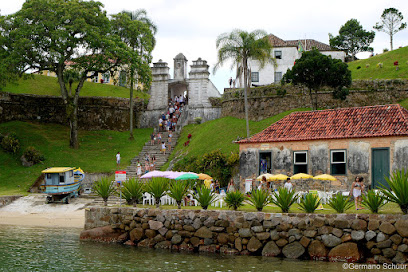
Mirante Morro das Pedras
Experience the stunning vistas at Mirante Morro das Pedras, a breathtaking viewpoint in Florianópolis offering panoramic views of the Atlantic coastline.
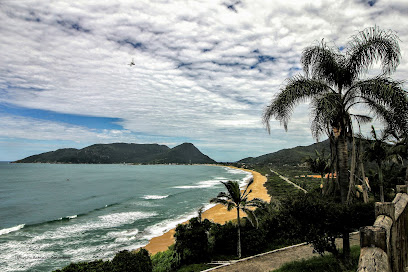
Dunes of Joaquina
Explore the breathtaking Dunes of Joaquina in Florianópolis, a stunning ecological park perfect for adventure and relaxation amidst nature's beauty.
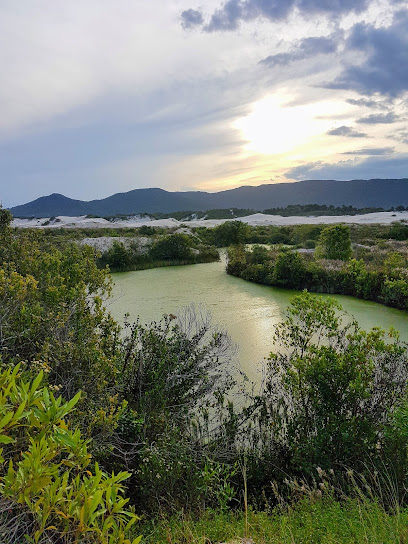
Ilha do campeche
Explore the pristine beaches and vibrant marine life of Ilha do Campeche, a hidden gem on Brazil's stunning southern coast.
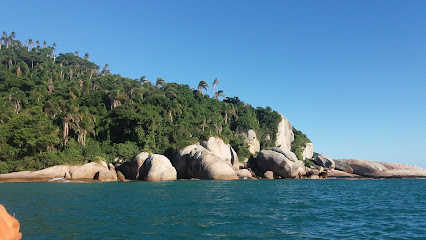
Mole Beach
Experience the pristine beauty and tranquility of Mole Beach in Santa Catarina, Brazil, where golden sands meet crystal-clear waters.
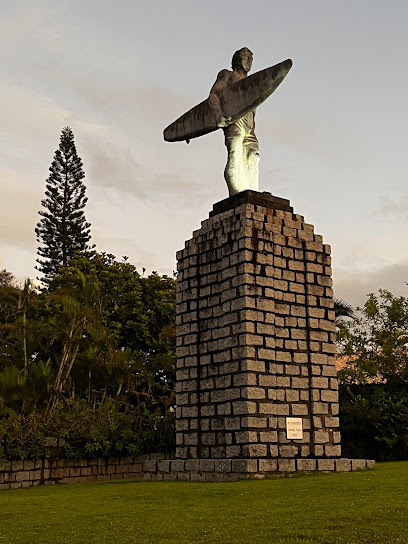
Palacio Cruz e Sousa
Explore the stunning Palácio Cruz e Sousa, a historical museum in Florianópolis showcasing Santa Catarina's rich cultural heritage and exquisite architecture.
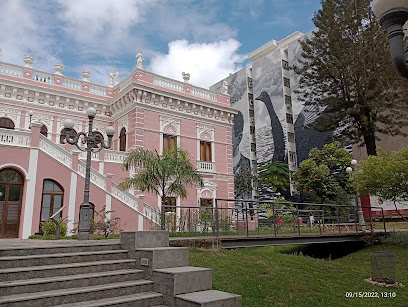
Livrarias Catarinense
Explore Livrarias Catarinense in Florianópolis: A treasure trove of books, cozy reading spaces, and vibrant literary events await your discovery.
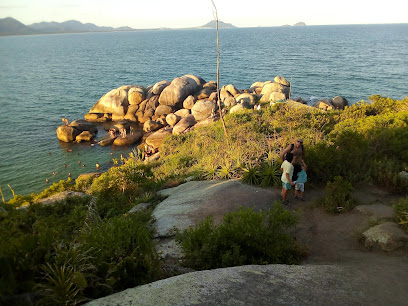
Praia do Santinho
Experience the beauty of Praia do Santinho, a stunning beach in Santa Catarina, perfect for relaxation, surfing, and enjoying nature.
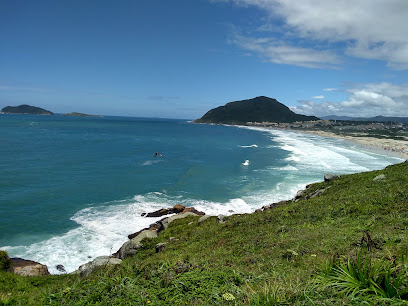
Lagoinha do Leste Beach
Discover the breathtaking beauty of Lagoinha do Leste Beach in Santa Catarina, a hidden gem surrounded by lush nature and stunning landscapes.
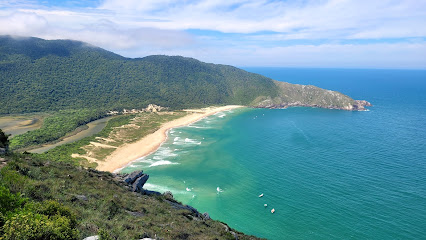
Naufragados Beach
Experience the tranquil beauty of Naufragados Beach in Florianópolis, a hidden gem perfect for relaxation, adventure, and stunning natural scenery.
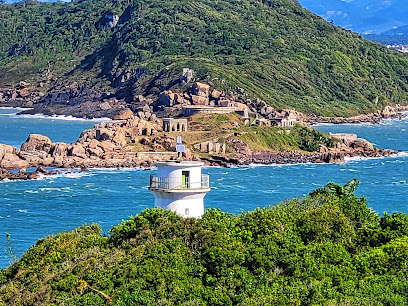
Unmissable attractions to see
Mercado Público de Florianópolis
Explore the vibrant Mercado Público de Florianópolis, a cultural gem offering fresh local produce, delicious dining, and a taste of Brazilian heritage.
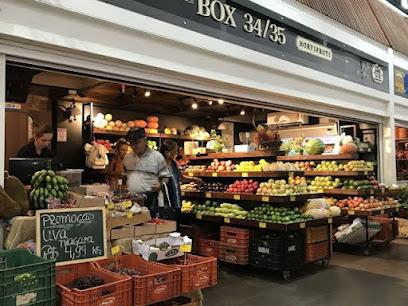
Joaquina Beach
Discover the beauty of Joaquina Beach in Santa Catarina, where golden sands meet turquoise waters for an unforgettable beach experience.
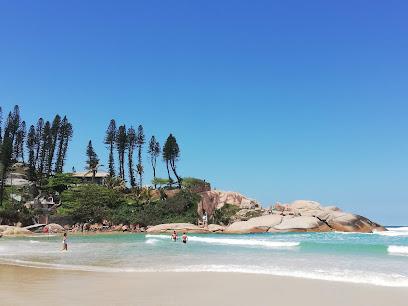
Guarda do Embaú Beach
Embrace the natural beauty and adventure at Guarda do Embaú Beach, a stunning coastal gem in Santa Catarina, perfect for relaxation and exploration.
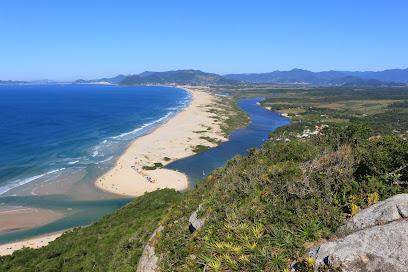
Ponte Hercílio Luz
Explore the breathtaking Ponte Hercílio Luz, an iconic bridge in Florianópolis offering stunning views and rich cultural history.
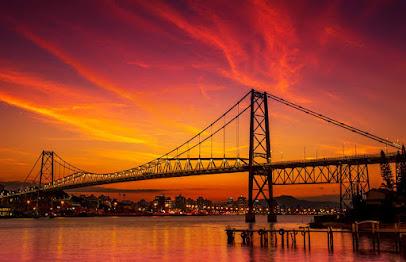
Praia do Mariscal
Experience the serene beauty of Praia do Mariscal, a stunning beach destination in Bombinhas, perfect for relaxation and water adventures.

Trapiche Beira Mar Norte Avenue
Experience the breathtaking beauty and vibrant culture of Trapiche Beira Mar Norte Avenue in Florianópolis, a must-visit scenic spot for every tourist.
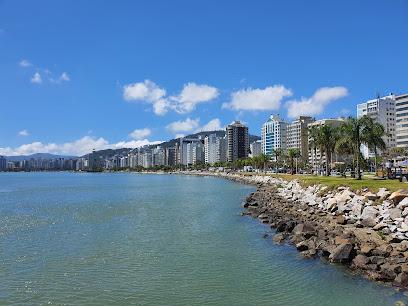
Praça XV de Novembro
Discover the vibrant charm of Praça XV de Novembro, a cultural oasis in the heart of Florianópolis, filled with history, art, and local flavors.

Praia Ponta Das Canas
Explore the sun-kissed shores of Praia Ponta Das Canas, a stunning public beach in Florianópolis, perfect for relaxation, water sports, and vibrant nightlife.
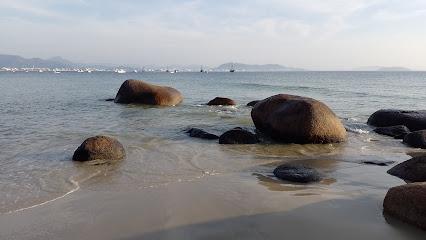
Tainha Beach
Explore the beauty of Tainha Beach, a tranquil paradise in Bombinhas, Brazil, perfect for relaxation, adventure, and breathtaking natural scenery.
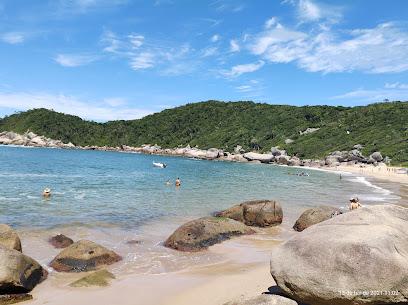
Northern Lagoinha Beach
Experience the breathtaking beauty of Northern Lagoinha Beach in Florianópolis, where sandy shores meet turquoise waters in a serene setting.
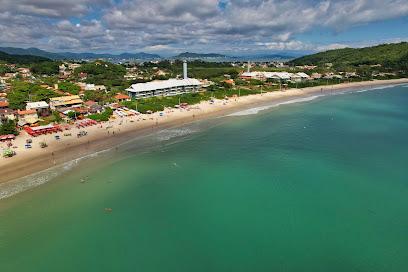
Praia dos Ingleses
Discover the captivating beauty and vibrant culture of Praia dos Ingleses, a premier beach destination in Santa Catarina, Brazil.
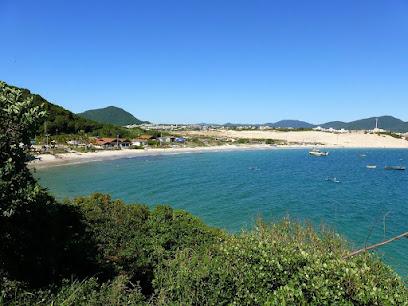
Parque da Luz
Experience the serene beauty and cultural richness of Parque da Luz in Florianópolis, a perfect escape for nature lovers and tourists alike.
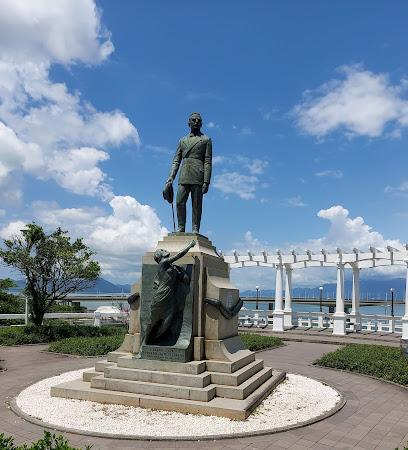
Armação Beach
Discover the sun-kissed shores of Armação Beach in Florianópolis, where stunning landscapes and local culture come together for an unforgettable experience.
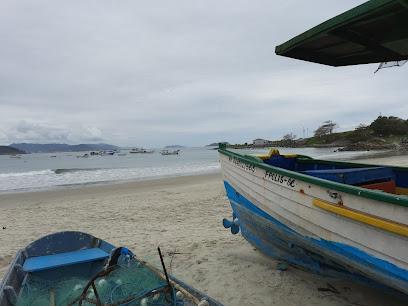
Campeche
Discover the stunning beaches and vibrant culture of Campeche in Santa Catarina, a perfect tropical getaway for relaxation and adventure.

Show Water Park
Dive into adventure at Show Water Park, a thrilling water theme park in Florianópolis with attractions for the entire family.
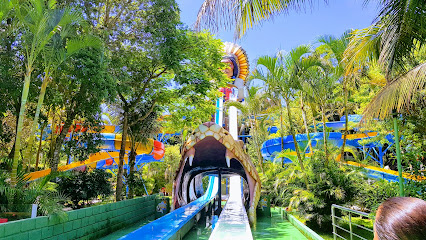
Essential places to dine
Coco Bambu
Experience exceptional seafood dining at Coco Bambu in Florianópolis - where every meal is a celebration of flavor and ambiance.
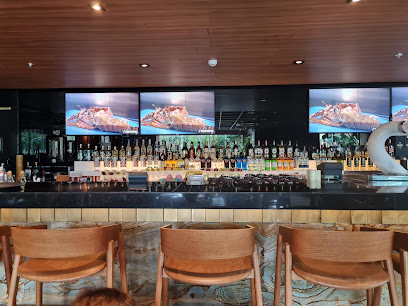
Ostradamus Restaurante
Discover exquisite seafood dining at Ostradamus Restaurante in Ribeirão da Ilha—where fresh flavors meet breathtaking ocean views.
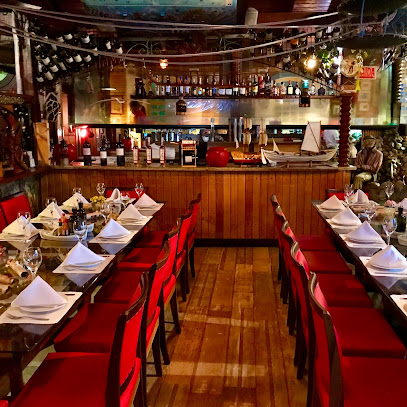
Bar do Arante
Experience the vibrant flavors of coastal Brazil at Bar do Arante—your go-to seafood destination in Florianópolis.

Restaurante Guacamole Cocina Mexicana
Experience the vibrant flavors of Mexico at Restaurante Guacamole Cocina Mexicana in Florianópolis – where every bite tells a story.
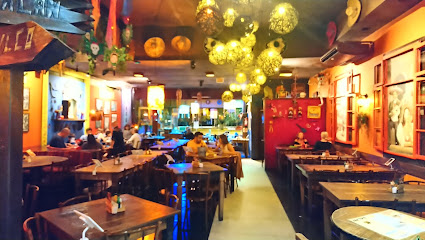
Restaurante Didge Steakhouse Pub
Experience authentic Australian cuisine at Didge Steakhouse Pub in Florianópolis—where great food meets vibrant atmosphere.
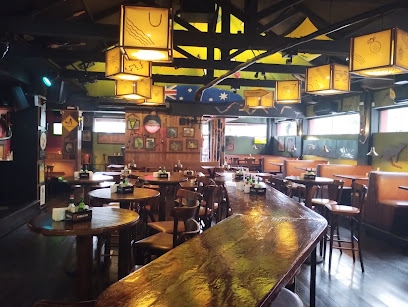
Paixão Restaurante
Experience exquisite seafood and authentic Brazilian cuisine at Paixão Restaurante in scenic Ingleses Norte, Florianópolis.
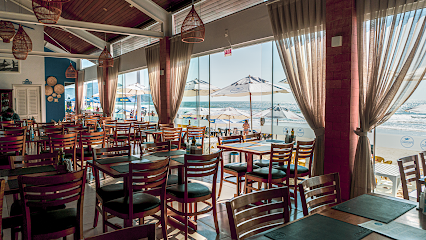
Macarronada Italiana
Savor authentic Italian cuisine at Macarronada Italiana in Florianópolis – where every pasta dish tells a story.
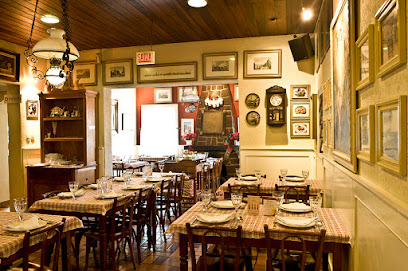
O Timoneiro
Experience the best seafood at O Timoneiro in Barra da Lagoa, where fresh flavors meet stunning coastal views.
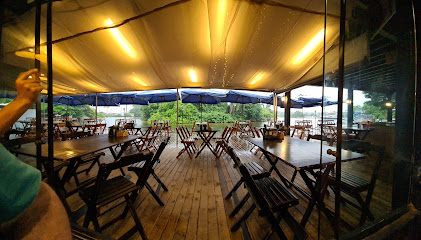
Rosso
Discover culinary excellence at Rosso Seafood Restaurant in Florianópolis - where fresh flavors meet breathtaking ocean views.
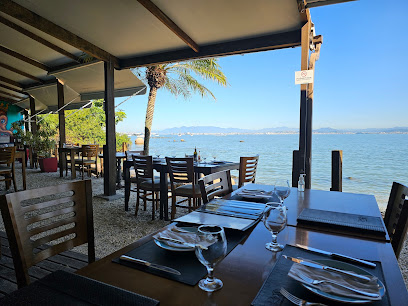
Restaurante Zé do Cacupé
Discover fresh seafood delights at Restaurante Zé do Cacupé in Florianópolis—an unforgettable dining experience by the sea.
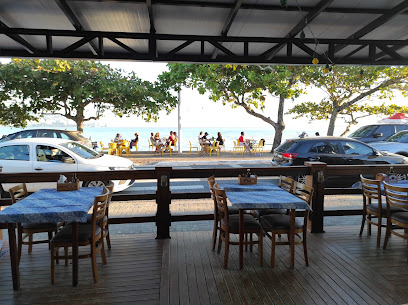
Ponta das Caranhas
Discover Ponta das Caranhas: A premier seafood restaurant in Florianópolis offering fresh dishes and stunning views in an inviting atmosphere.
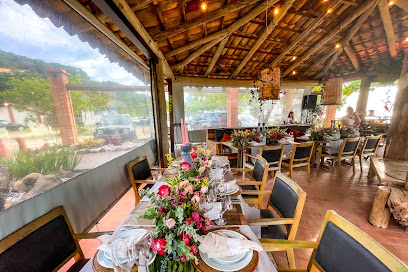
Marisqueira Sintra
Experience exquisite seafood dining at Marisqueira Sintra in Florianópolis – where culinary excellence meets breathtaking waterfront views.
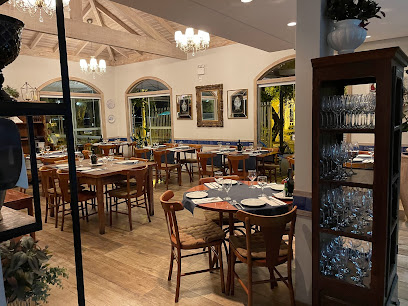
Art Gourmet Restaurante
Discover authentic Brazilian cuisine at Art Gourmet Restaurante - a vibrant buffet and exceptional catering venue in Florianópolis.
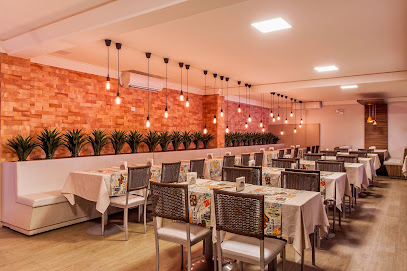
Box 32
Discover fresh seafood delights at Box 32 in Florianópolis' Municipal Market - where tradition meets flavor in every bite.
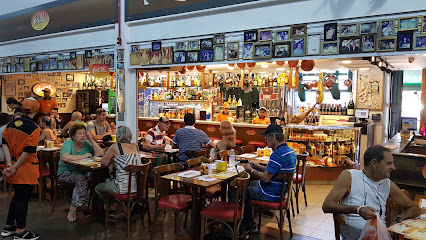
Porto do Contrato
Discover Porto do Contrato: A culinary treasure on Florianópolis' Ribeirão da Ilha serving fresh seafood amidst breathtaking ocean views.
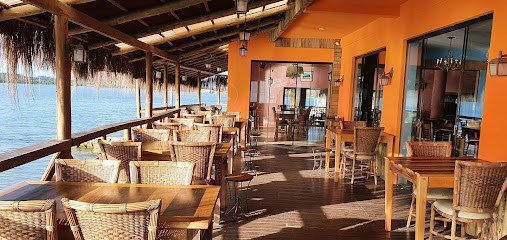
Markets, malls and hidden boutiques
Mercado Público de Florianópolis
Discover the heart and soul of Florianópolis at the Mercado Público, where local flavors and vibrant culture create an unforgettable shopping experience.
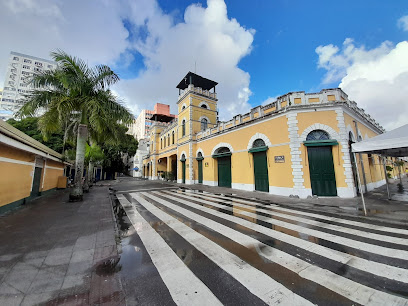
Beiramar Shopping
Discover the ultimate shopping experience at Beiramar Shopping in Florianópolis, featuring diverse stores, delectable dining, and exciting entertainment options.
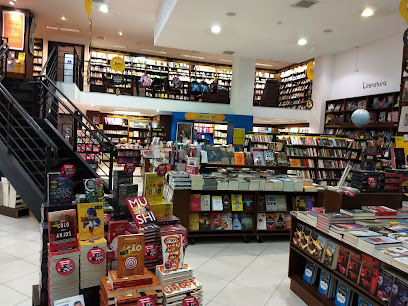
Villa Romana Shopping
Explore Villa Romana Shopping, a vibrant shopping mall in Florianópolis featuring diverse shops, dining, and entertainment options for an unforgettable experience.
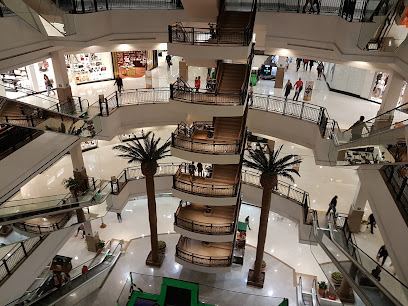
Floripa Shopping
Discover the ultimate shopping experience at Floripa Shopping, featuring a diverse selection of stores, dining options, and entertainment in the heart of Florianópolis.
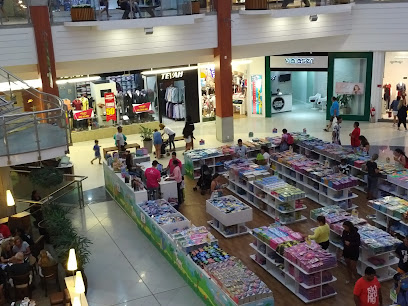
Jurerê OPEN
Experience Jurerê OPEN, a vibrant shopping and cultural center in Florianópolis, offering diverse shops, delicious dining, and family-friendly fun.
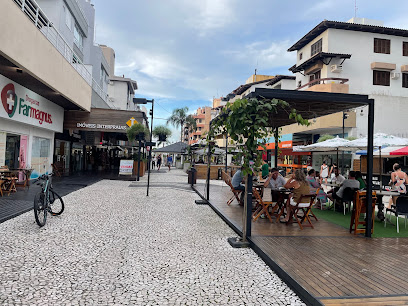
Canasvieiras Commercial Center
Experience shopping and dining at Canasvieiras Commercial Center, a vibrant hub in Florianópolis with diverse offerings for every traveler.
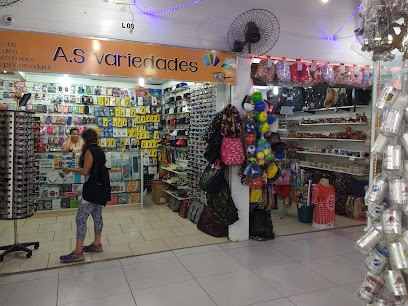
Shopping Casa & Design
Explore Shopping Casa & Design in Florianópolis for an unparalleled selection of premium furniture and home decor, inspiring creativity and style.
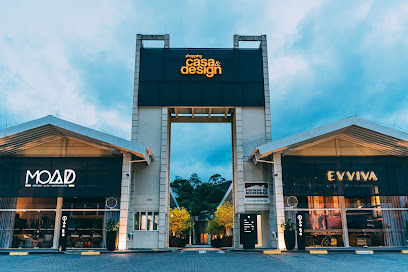
Mac Shopping
Discover the vibrant Mac Shopping mall in Florianópolis, where shopping, dining, and entertainment come together in a modern retail experience.

Shopping Oka Floripa
Discover Shopping Oka Floripa, a vibrant shopping mall in Campeche with diverse shops, dining options, and entertainment for all ages.
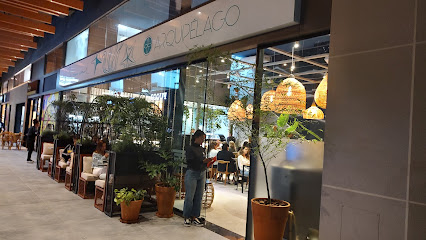
Lojas França
Discover Lojas França in Florianópolis - a toy store that brings joy and creativity to life with every delightful toy and game.
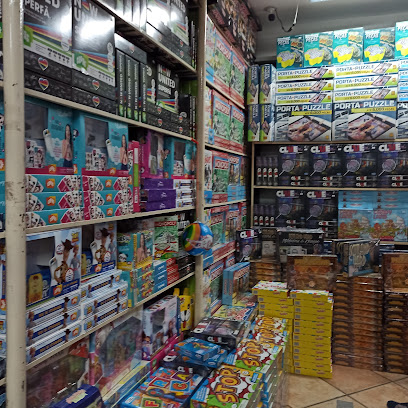
Vera Cruz Aviamentos
Explore the vibrant world of crafting at Vera Cruz Aviamentos, a unique notions store in the heart of Florianópolis, filled with local fabrics and accessories.

Handicraft Gallery
Explore the Handicraft Gallery in Florianópolis, where art meets culture in a vibrant display of local craftsmanship and unique souvenirs.
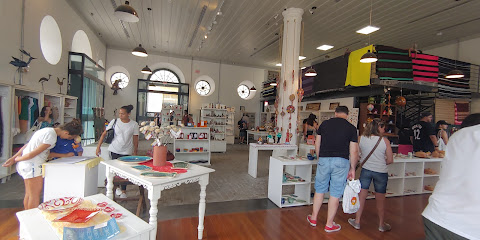
Brazil Cocoa Chocolates
Discover the sweet taste of Brazil at Brazil Cocoa Chocolates, a chocolate haven in Florianópolis offering artisan delights and aromatic coffee.
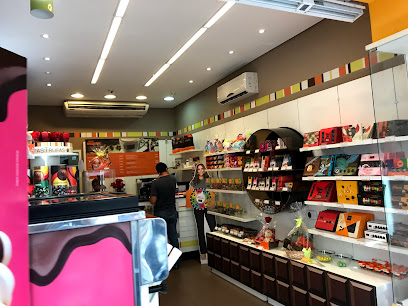
Floripa Store
Experience the vibrant island spirit at Floripa Store, your go-to destination for unique clothing in the heart of Florianópolis.
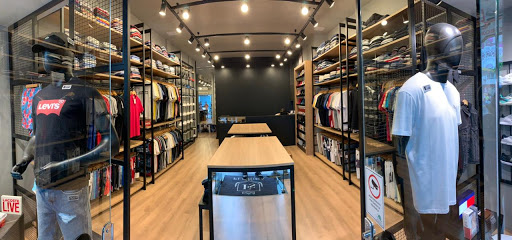
Shopping Praia de Fora
Explore Shopping Praia de Fora in Florianópolis for a unique blend of local culture, diverse shopping, and delicious dining experiences.

Essential bars & hidden hideouts
Boni's Bar
Discover Boni's Bar in Lagoa da Conceição, Florianópolis – a vibrant cocktail bar and restaurant with stunning views and an inviting ambiance.
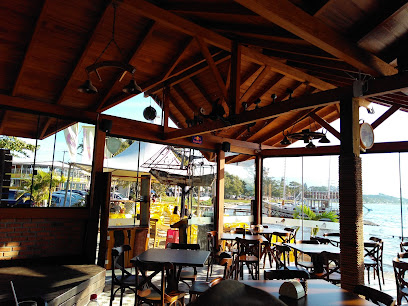
John Bull Layback Brew Pub
Discover the unique flavors and vibrant nightlife at John Bull Layback Brew Pub in stunning Lagoa da Conceição, Florianópolis.
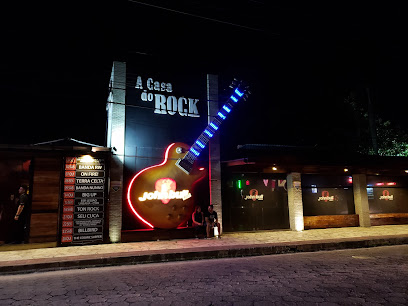
Bar DeRaiz
Discover the lively nightlife of Bar DeRaiz in Lagoa da Conceição, Florianópolis - a cocktail bar and nightclub that redefines fun!
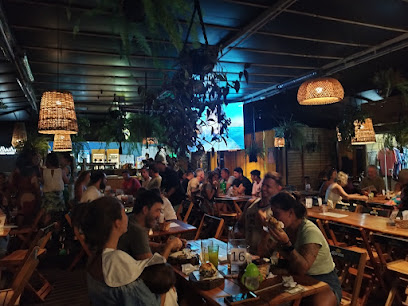
Botequim Floripa
Experience the vibrant atmosphere and flavorful offerings at Botequim Floripa, the heart of nightlife in Florianópolis.
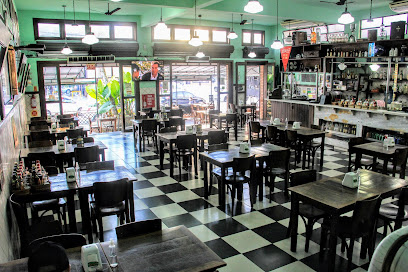
Rabodigalo
Discover the lively nightlife at Rabodigalo, a vibrant bar in Santa Mônica, Florianópolis, offering a unique blend of drinks and local culture.
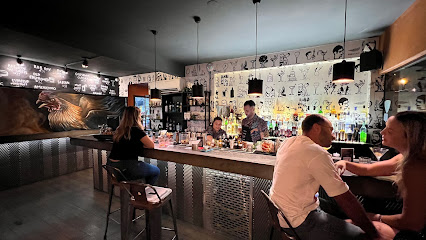
No Class
Experience the vibrant nightlife of Florianópolis at No Class, where exceptional cocktails and electrifying atmosphere await you.
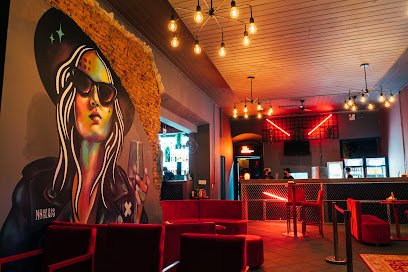
Blues Velvet Bar
Discover the heartbeat of Florianópolis at Blues Velvet Bar, where live music, local drinks, and a vibrant atmosphere await you.
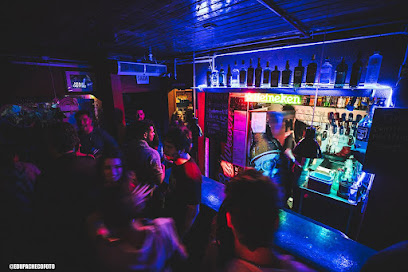
Scuna Bar
Experience the pulse of Florianópolis nightlife at Scuna Bar, where great music meets vibrant energy in a lively atmosphere.
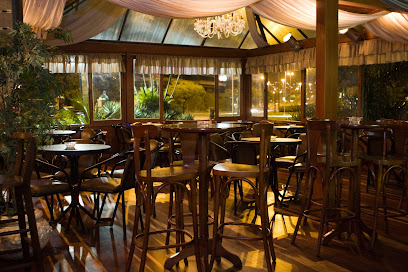
La Cave Gastronomia e Vinhos
Immerse yourself in a unique dining experience at La Cave Gastronomia e Vinhos, where delectable tapas and an exquisite wine selection await.

Bro Cave Pub
Discover the lively nightlife at Bro Cave Pub in Florianópolis, where locals and tourists come together for drinks, music, and great vibes.
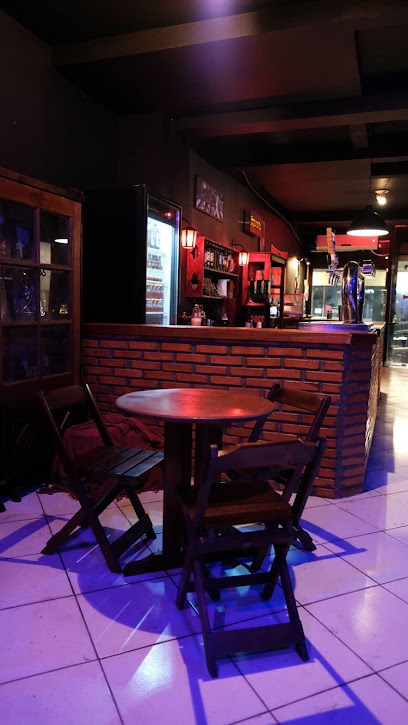
Jazzinn
Discover Jazzinn in Florianópolis - a vibrant bar offering exquisite drinks, delicious food, and live music in a cozy setting.
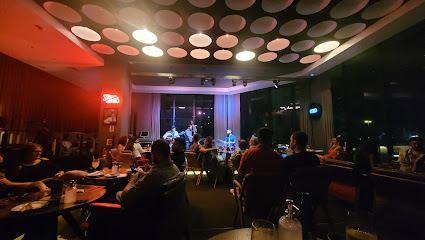
Rio's Bar
Discover the vibrant nightlife and exquisite cocktails at Rio's Bar, the heart of Florianópolis' social scene, perfect for unwinding after a day of exploration.

Franklin Bar
Discover the energetic vibe of Franklin Bar in Florianópolis, where exceptional drinks and a lively atmosphere await every visitor.
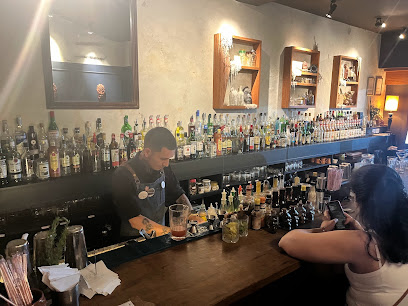
Tarsila - Bar de coquetéis
Discover the art of cocktail making at Tarsila - Bar de Coquetéis, where unique flavors and a vibrant atmosphere await in Florianópolis.
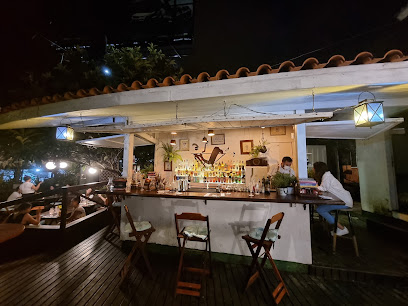
Jonas Pub
Discover the lively atmosphere of Jonas Pub in the heart of Florianópolis, where locals and tourists come together for great drinks and unforgettable experiences.
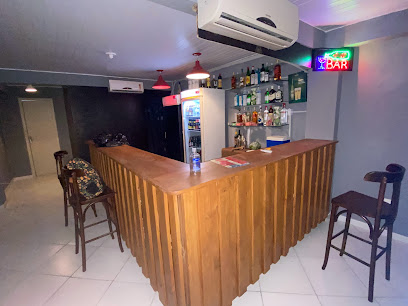
Local Phrases
-
- HelloOlá
[oh-lah] - GoodbyeTchau
[chow] - YesSim
[seem] - NoNão
[now] - Please/You're welcomePor favor/De nada
[por fah-vohr/de nah-dah] - Thank youObrigado (male)/Obrigada (female)
[oh-bree-gah-doh/oh-bree-gah-dah] - Excuse me/SorryCom licença/Desculpe
[kohm lee-sen-sah/dehs-kool-peh] - How are you?Como vai?
[koh-moh vah-ee] - Fine. And you?Bem. E você?
[behn. ee voh-seh] - Do you speak English?Você fala inglês?
[voh-seh fah-lah een-gleh-s] - I don't understandEu não entendo
[eh-oo now-en teh-ndoo]
- HelloOlá
-
- I'd like to see the menu, pleaseEu gostaria de ver o cardápio, por favor
[eh-oo goh-stah-ree-ah deh vehr oo kahr-dah-pee-oh, por fah-vohr] - I don't eat meatEu não como carne
[eh-oo now-en koh-moh kahr-neh] - Cheers!Saúde!
[sah-oo-deh] - I would like to pay, pleaseEu gostaria de pagar, por favor
[eh-oo goh-stah-ree-ah deh pah-gahr, por fah-vohr]
- I'd like to see the menu, pleaseEu gostaria de ver o cardápio, por favor
-
- Help!Socorro!
[soh-koh-roh] - Go away!Vá embora!
[vah ehm-boh-rah] - Call the Police!Chame a polícia!
[shah-meh ah poh-lee-see-ah] - Call a doctor!Chame um médico!
[shah-meh oom meh-dee-koh] - I'm lostEstou perdido
[eh-stoh pehr-dee-doo] - I'm illEstou doente
[eh-stoh doh-en-teh]
- Help!Socorro!
-
- I'd like to buy...Eu gostaria de comprar...
[eh-oo goh-stah-ree-ah deh kohm-prahr] - I'm just lookingEstou só olhando
[eh-stoh soh oh-lyahn-doo] - How much is it?Quanto custa?
[kwan-too koos-tah] - That's too expensiveIsso é muito caro
[ee-soh eh moo-ee-too kah-roo] - Can you lower the price?Você pode baixar o preço?
[voh-seh poh-deh bah-ee-shahr oo preh-soh]
- I'd like to buy...Eu gostaria de comprar...
-
- What time is it?Que horas são?
[keh oh-rahz sah-ooh] - It's one o'clockÉ uma hora
[eh oo-mah oh-rah] - Half past (10)Meia (10)
[may-ah (10)] - MorningManhã
[mah-nyah] - AfternoonTarde
[tahr-deh] - EveningNoite
[noy-chee] - YesterdayOntem
[on-tehm] - TodayHoje
[oh-zhee] - TomorrowAmanhã
[ah-mah-nyah] - 1Um
[oom] - 2Dois
[doh-ees] - 3Três
[trehs] - 4Quatro
[kwah-troh] - 5Cinco
[seen-koh] - 6Seis
[say-ees] - 7Sete
[say-teh] - 8Oito
[oy-toh] - 9Nove
[noh-veh] - 10Dez
[dehz]
- What time is it?Que horas são?
-
- Where's a/the...?Onde fica o/a...?
[ohn-deh fee-kah oh/ah] - What's the address?Qual é o endereço?
[kahl eh oh ehn-dreh-soh] - Can you show me (on the map)?Você pode me mostrar (no mapa)?
[voh-seh poh-deh meh moh-strahr (noh mah-pah)] - When's the next (bus)?Quando é o próximo (ônibus)?
[kwan-doo eh oh proh-see-moh (ohn-ee-boos)] - A ticket (to ....)Uma passagem (para ...)
[oo-mah pah-sah-jeh (pah-rah)]
- Where's a/the...?Onde fica o/a...?
History of Florianópolis
-
Before the arrival of European settlers, the island of Santa Catarina, where Florianópolis is located, was inhabited by the Carijó people, a subgroup of the Guarani nation. They were skilled navigators and fishermen, living off the rich coastal resources.
-
In the early 16th century, Portuguese explorers began to arrive on the island. In 1673, Francisco Dias Velho established a small settlement called Nossa Senhora do Desterro, which later became the city of Florianópolis. The Portuguese colonization focused on fortifying the island against potential foreign invasions and developing agriculture.
-
The official founding of Nossa Senhora do Desterro occurred in 1673 by Francisco Dias Velho. The settlement served as a strategic point for controlling the southern coast of Brazil and protecting the mainland from potential invasions by other European colonial powers.
-
To secure the island, various fortresses were constructed during the 18th century, including São José da Ponta Grossa, Santa Cruz de Anhatomirim, and Santo Antônio de Ratones. These forts played a crucial role in defending the island and are now important historical landmarks.
-
In the 18th century, a significant influx of Azorean immigrants arrived in Florianópolis. They brought with them their traditions, customs, and culinary practices, which greatly influenced the local culture. The Azorean legacy is still evident in the island's festivals, architecture, and cuisine.
-
In 1894, after the Federalist Revolution, the city was renamed Florianópolis in honor of Marshal Floriano Peixoto, the second president of Brazil. The name change was part of a broader effort to unify the country and pay tribute to the Republic's leaders.
-
Throughout the 20th century, Florianópolis experienced significant economic growth and modernization. The establishment of the Federal University of Santa Catarina in 1960 and the development of the technology sector transformed the city into a hub for education and innovation.
-
Florianópolis is known for its rich cultural heritage, which is celebrated through various festivals and traditions. The Festa do Divino Espírito Santo, a festival with Azorean roots, and the Carnival of Florianópolis are among the most notable events that highlight the city's vibrant culture.
Florianópolis Essentials
-
Florianópolis is accessible via Hercílio Luz International Airport (FLN), which offers both domestic and limited international flights. The airport is approximately 15 kilometers from the city center. There are regular bus and taxi services available from the airport to various parts of the city. Alternatively, for a more luxurious option, private shuttle services can be arranged. If traveling from other parts of Brazil, you can also reach Florianópolis by long-distance bus services.
-
Public transportation in Florianópolis includes buses that connect different neighborhoods and the island's main attractions. The bus system is reliable and affordable, but can be crowded during peak hours. Taxis and ride-sharing services like Uber are widely available and are a convenient option for shorter distances. Renting a car is another option, particularly for exploring areas outside the city center, but be aware of traffic congestion during the summer season. Biking is also popular, especially along the scenic coastal routes.
-
The official currency in Brazil is the Brazilian Real (BRL). Credit and debit cards are widely accepted in Florianópolis, especially in hotels, restaurants, and larger shops. However, it is advisable to carry some cash for smaller establishments, street vendors, and markets. ATMs are readily available throughout the city, but be cautious of potential skimming devices and prefer using ATMs located inside banks or shopping centers.
-
While Florianópolis is generally considered safe for tourists, it is important to take standard precautions. Avoid walking alone at night in poorly lit or unfamiliar areas. Neighborhoods like the city center and some parts of the mainland can experience higher crime rates, particularly targeting tourists. Always keep an eye on your belongings in crowded places such as markets and beaches. Stick to well-populated and well-lit areas, and use reputable transportation services.
-
In case of emergency, dial 190 for police assistance, 192 for medical emergencies, and 193 for fire services. Major hospitals in Florianópolis include Hospital Governador Celso Ramos and Hospital Universitário. It is recommended to have travel insurance that covers medical emergencies. Pharmacies are widespread and can provide over-the-counter medications for minor health issues. For consular assistance, contact your country's nearest consulate or embassy located in major Brazilian cities.
-
Fashion: Do dress comfortably and casually, but avoid overly revealing clothing when not at the beach. Religion: Do respect religious sites by dressing modestly and being quiet. Public Transport: Do have small change ready for bus fares. Don't eat or drink on public transport. Greetings: Do greet people with a handshake or a friendly 'Olá'. Eating & Drinking: Do try local dishes like seafood, but don't forget to ask if you are unsure about the ingredients. Don't rush meals; dining is a social activity.
-
To experience Florianópolis like a local, visit the public markets such as Mercado Público for fresh seafood and local crafts. Try joining a local samba or forró dance class to immerse yourself in Brazilian culture. Explore lesser-known beaches like Lagoinha do Leste for a more secluded experience. Renting a bike to tour the island’s diverse neighborhoods can provide a unique perspective. Lastly, engage with locals who are often eager to share tips and stories about their beloved city.
Trending Landmark in Florianópolis
-
Ponte Hercílio Luz
-
Fundação Projeto TAMAR Florianópolis
-
São José da Ponta Grossa Fortress
-
Matadeiro Beach
-
Mirante do Morro da Cruz
-
Fortaleza de Santa Cruz de Anhatomirim
-
Mirante Morro das Pedras
-
Dunes of Joaquina
-
Ilha do campeche
-
Mole Beach
-
Palacio Cruz e Sousa
-
Livrarias Catarinense
-
Praia do Santinho
-
Lagoinha do Leste Beach
-
Naufragados Beach
Nearby Cities to Florianópolis
-
Things To Do in São Paulo
-
Things To Do in Puerto Iguazú
-
Things To Do in Foz do Iguaçu
-
Things To Do in Hernandarias
-
Things To Do in Encarnacion
-
Things To Do in Carmen del Parana
-
Things To Do in Rio de Janeiro
-
Things To Do in Villarrica
-
Things To Do in Tacuarembó
-
Things To Do in Ypacarai
-
Things To Do in San Bernardino
-
Things To Do in Aregua
-
Things To Do in Asuncion
-
Things To Do in Maldonado
-
Things To Do in Punta del Este


















